The Nintendo Family Computer: Forgotten 8-bit Powerhouse?
Here at Nicole Express, we’ve been going through a lot of different “game consoles”– small single-purpose computers that are only used to play video games. But we’ve left out a big one: Nintendo’s Family Computer, Famicom to its friends. This console took Japan by storm and was the dominant console before the release of the TurboGrafx (PC Engine, for European readers, if there are any of you left), but never managed to get much of a foothold outside of Asia. What was it like? Why did it flop? Well, you can blame Atari for that one…
Familiar Computer
“Famicom” is short for “Family Computer”, but nobody would confuse this adorable little box for something like a Fujitsu FM-8; this is a toy. And that’s just fine for Nintendo; most people reading this probably know them more as a toy company anyway.
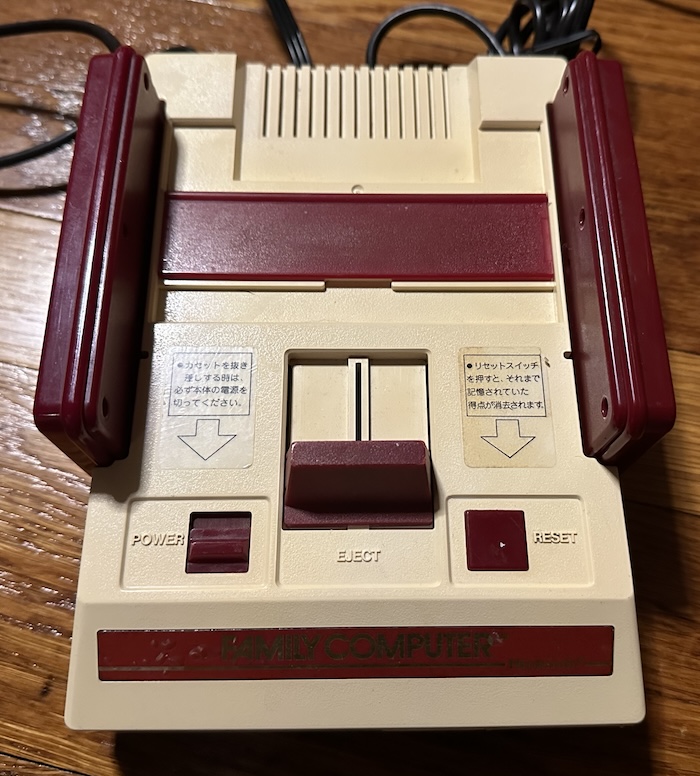
Two hardwired controllers, RF-only output (mine is modded, thankfully), and a cartridge slot. You’d be excused for thinking this is just another Japanese TMS9918 system, like the Sega SG-1000 (predecessor to the SegaVision) or the Nichibutsu My Vision. But this is actually a wholly unique chipset. Nintendo were betting big here.
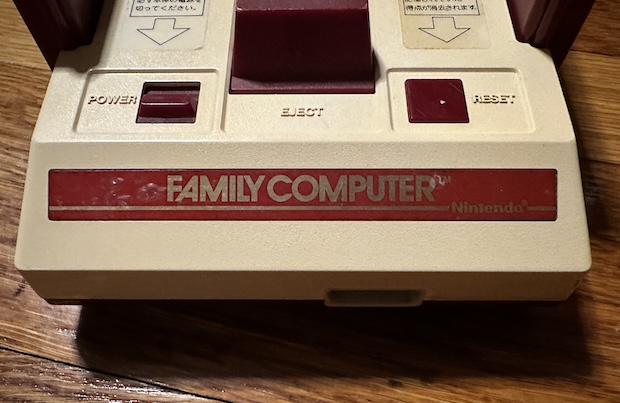
That second controller also has a microphone in lieu of a start button. Kind of an odd tradeoff, but it’s a neat little touch. Popular Famicom game The Legend of Zelda, famous here mostly for topping lists of “most influential games you’ve never played”, even had an enemy that was weak to loud noises! A very clever and playful addition, but I think the short cable would’ve ruined it for US markets.
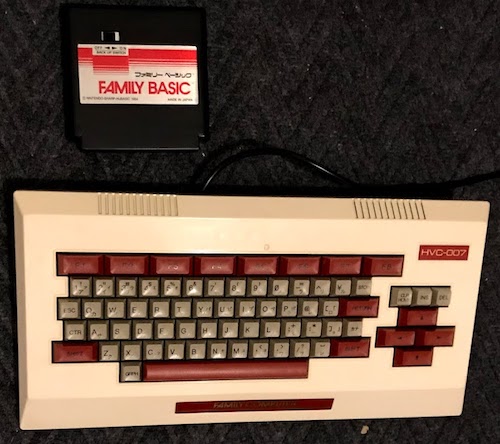
Fun fact, it was possible to turn the Family Computer into an actual computer, with a BASIC and all. Well, I say an actual computer, but “Family BASIC” is more of a toy app than a real BASIC. It’s a step above Atari 2600’s BASIC Programming, but not much more than that.
Games
Donkey Kong
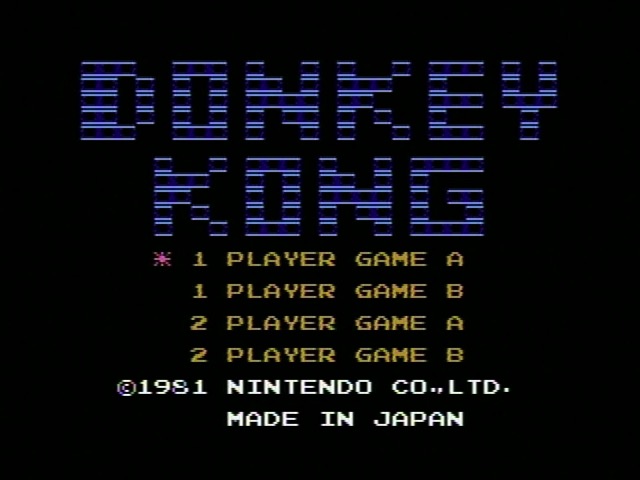
This is the game that convinced Nintendo they could make it in the world of game systems, so you’d think it’d have a good port. And certainly it looks more like the original game than its competitors.
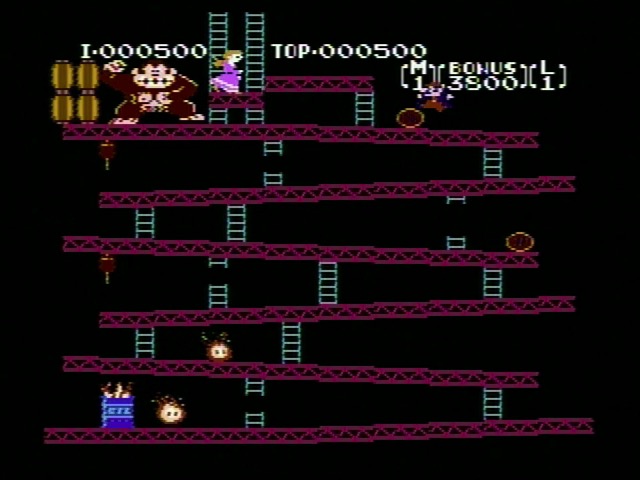
The cool thing about Famicom Donkey Kong is that it follows the Japanese level order, so you don’t need to play all the levels over and over again to see them all. The weird thing about Famicom Donkey Kong is, unlike the Coleco ADAM version, it doesn’t feature all of the levels of the original– it’s missing the “pie factory”!
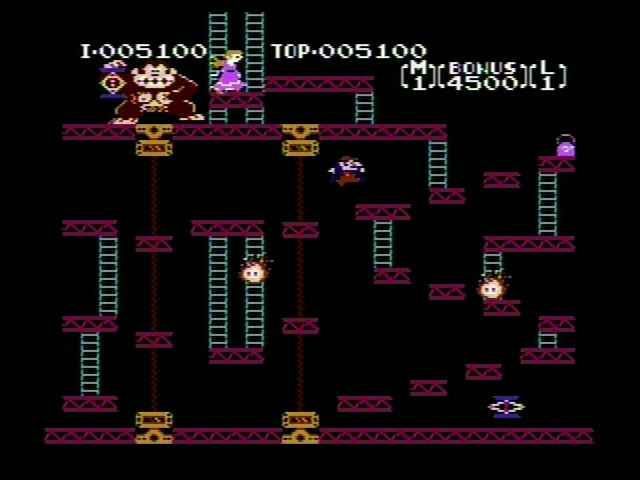
The last stage with the girders is still here, though.
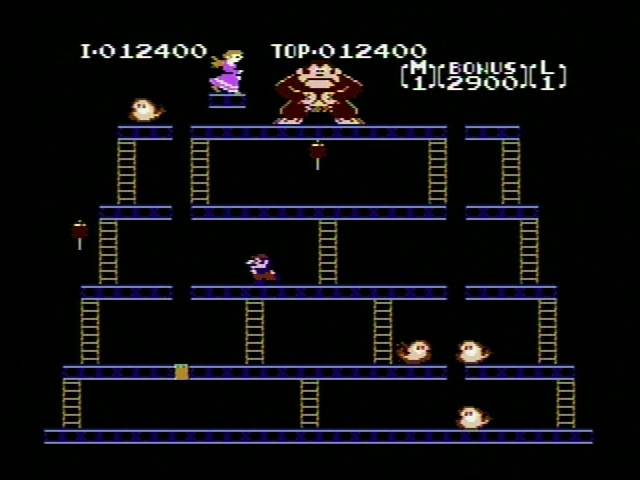
Despite not being the full game, this sold pretty well. It’s pretty forgotten today, but Donkey Kong was a pretty big hit in the arcades back in the day. Nintendo thought so too; they took its hero (named “Mario”) to an even bigger game…
Super Mario Bros.

Super Mario Bros. is often just dismissed as a clone of Namco’s Pac-Land, with a pudgy plumber instead of an appealing disc-man. But this is actually a pretty impressive title in its own right, and it’s easy to see why it was such a hit in 1985 Japan.
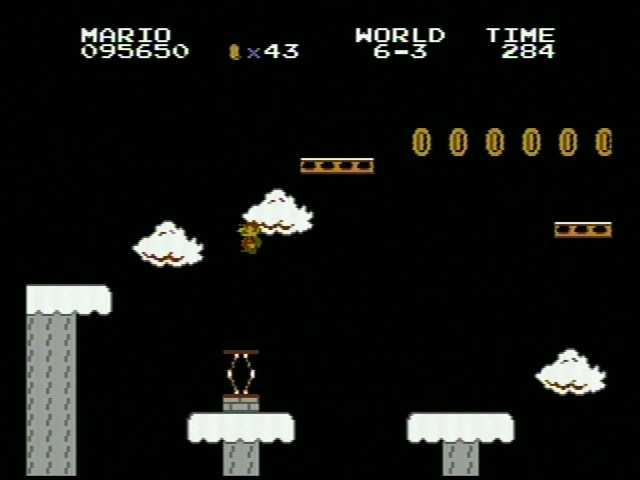
The key mechanic is in the title: the plumber can change his size, from a tiny Donkey Kong-sized Mario, to a larger “Super” Mario. He does this by eating mushrooms, an homage to Lewis Carroll’s Alice in Wonderland.

The game is also absolutely huge for its time, with 32 stages. A few repeats (especially the underwater stage, for whatever reason) but still, pretty good for a 40kiB cartridge!
Tetris
Here’s a later game! You can see that these look way better than earlier titles; this is from 1988, and uses a “CNROM” layout, which just means a chip on the cartridge expands the graphics capability.
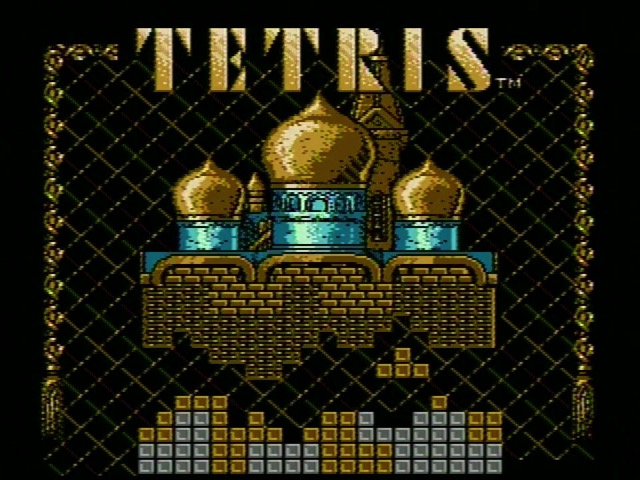
And yes, this is that game, the game that ended perestroika, the game that revived the Soviet Union. Surprisingly, Bullet-Proof Software under Henk Rogers was able to get a license to the title; it was cancelled pretty quickly.

I’m told this is actually a pretty bad version of Tetris, and the controls definitely don’t feel great. Plus, this is before the KGB got their hands on the game and really optimized it– but hey, this is pretty much the only version of Tetris you can play here in the western bloc! Don’t really recommend buying one though; my poor package was left in customs for nearly a year just from the word “Tetris”.
Now you’re playing with power
What’s inside the Family Computer? Well I’ve given it away– this is a wholly custom chipset. No SG-1000-like stock chips here, Nintendo really went all out.
The CPU for this is the Ricoh 2A03. This is a modified 6502 core, removing the patented decimal mode, but supplementing it with a nice audio core. Seriously, this system sounds great; in addition to square waves typical of eight-bit consoles, it also features triangle waves. Music on this console has a really unique sound. Plus it runs at 1.7MHz; that’s a lot faster than the 1MHz Apple ][ or Commodore 64 (original, of course, not the 64-16). But you only get 2kiB of RAM.
The Ricoh 2C02, also known as the Picture Processing Unit, is the graphics co-processor, but works more like an arcade machine than like the SegaVision. Rather than the cartridge containing only the game program, it has a separate set of address and data lines that connect directly to the PPU, containing its graphics and tiles.
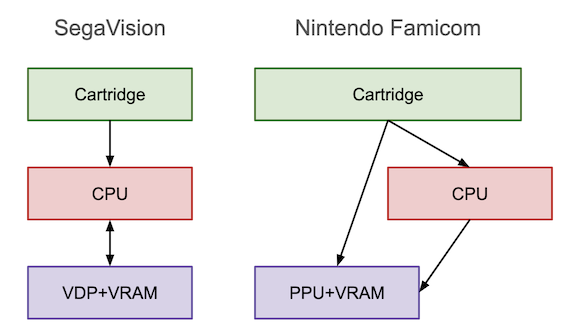
You might think that this is very limited; a SegaVision game can switch out the graphics in VRAM, but a Family Computer game is stuck with the tiles that are burned into the ROM. Well, there are two ways around that: game cartridges can provide the RAM, if that’s needed. But often times it just isn’t; you can put larger ROMs and let the CPU switch out which area the PPU is viewing, like Tetris does above. And that’s a lot faster than changing VRAM.
Speaking of VRAM, that does exist; it’s a measly 2kiB, though at least it’s not shared with the CPU’s 2kiB. But you don’t really need that much here– it just has the layout for the tiles. In fact, 2kiB is a lot– you can have full horizontal or vertical scrolling.
The flop
Why didn’t the Family Computer make it to America? Well, as I said, Atari. Nintendo made the misguided decision to make an agreement with Atari to distribute the console; unfortunately, in 1983 thanks to the market crash Warner did a big shakeup at Atari, and the new leadership just sat on the contract after a test market in Kansas City (under the not-particularly-inspiring name “Atari Family System”) flopped– many say due to deliberate sandbagging by Atari.
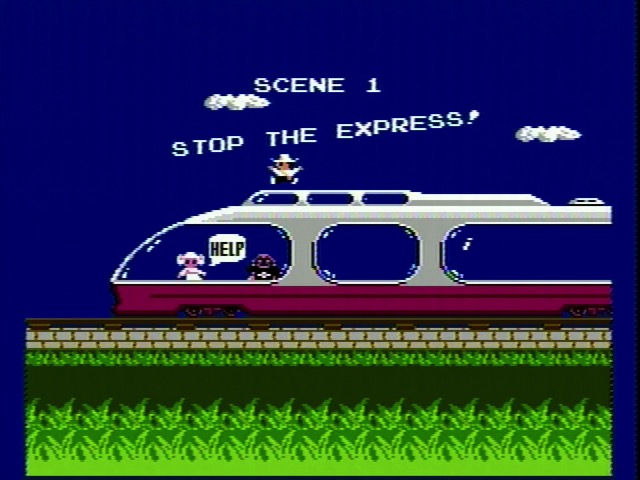
Those weasels at Warner even went so far as to tie up plans for a European launch in litigation, hoping to reduce competition from the Atari 7800, which they owned on more favorable terms. But well it didn’t turn out well for Nintendo, it’s probably for the best; despite the best efforts of Sega and Atari, computers (like Atari’s own Amiga) were the future of the games industry.
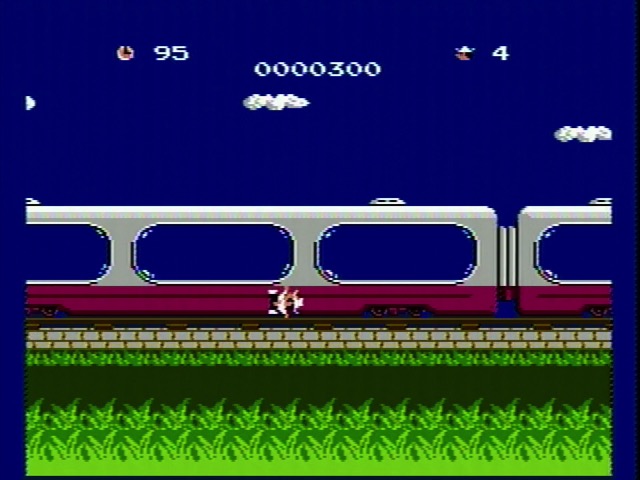
Still, the Famicom is a nice throwback and has a great library of pick-up-and-play games. (like Hudson Soft’s Challenger, above) Pick it up, and be transported instantly back to the time when the sky was still blue, you could take a train across a continent, and most people didn’t even own a Geiger counter.

A series on: April Fool's Day
A bit of levity on this otherwise deathly serious blog.
- The Canon Cat! — Wherein a rare 1980s computer gets fur all over my carpet and begs for food.
- Mr. Do Proves Our History Is Not What It Seems — A look at a vintage arcade board reveals the dark secrets of reality itself. Don't believe what they say, only believe what they (Mr.) Do
- Another Weird Cartridge! Why doesn't it have a label? — The deepest depravity of the human condition revealed in the form of an NES cartridge. Not just because this post has 240p interpreted as 480i, but mostly because of the murder
- ROM Hacking in the 90's — A look back at an internet that is no more. Under construction!!
- The Nintendo Family Computer: Forgotten 8-bit Powerhouse? — History takes a very different turn, and now westerners don't get to enjoy Nintendo games. Also some other stuff might've happened
